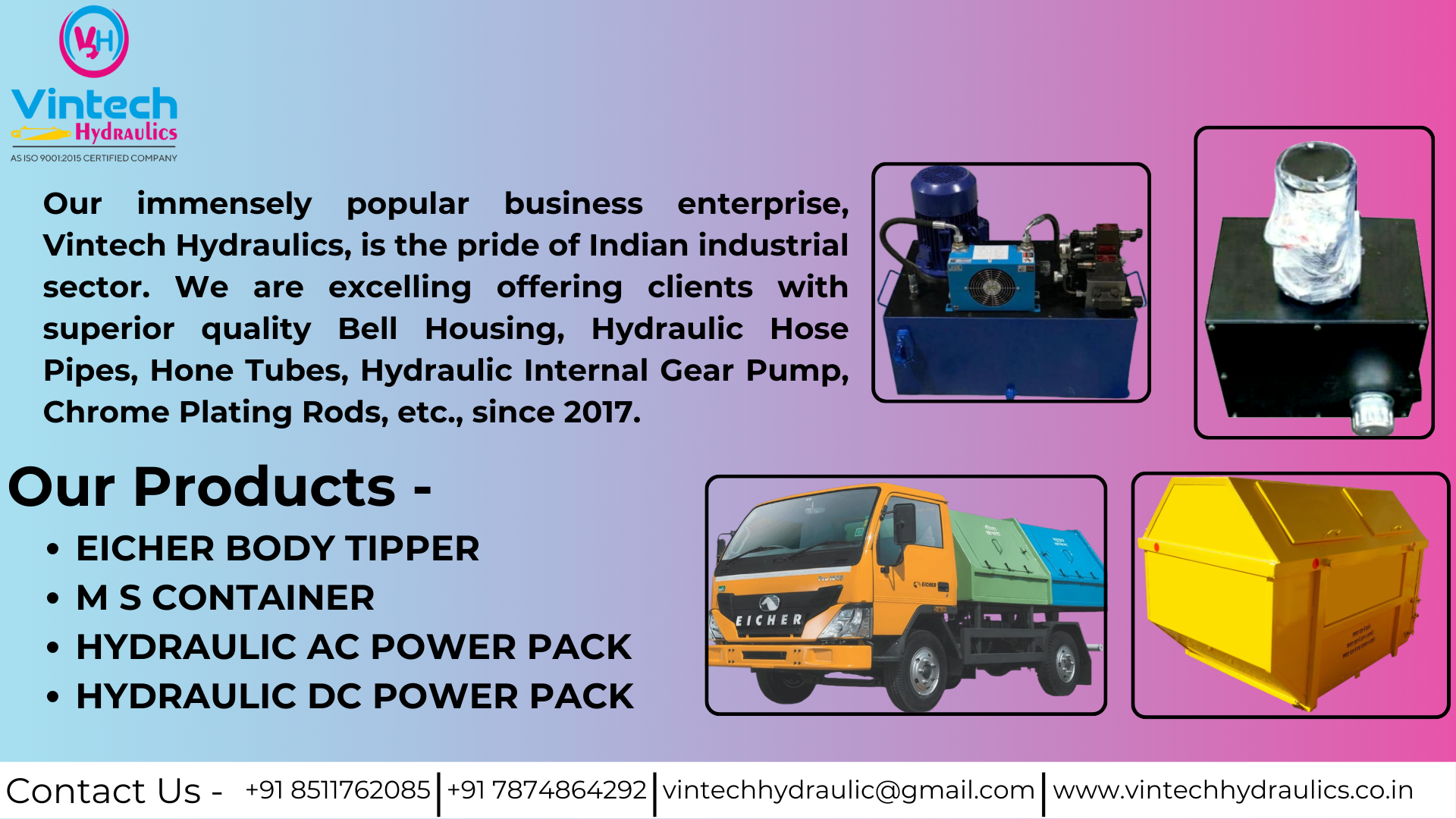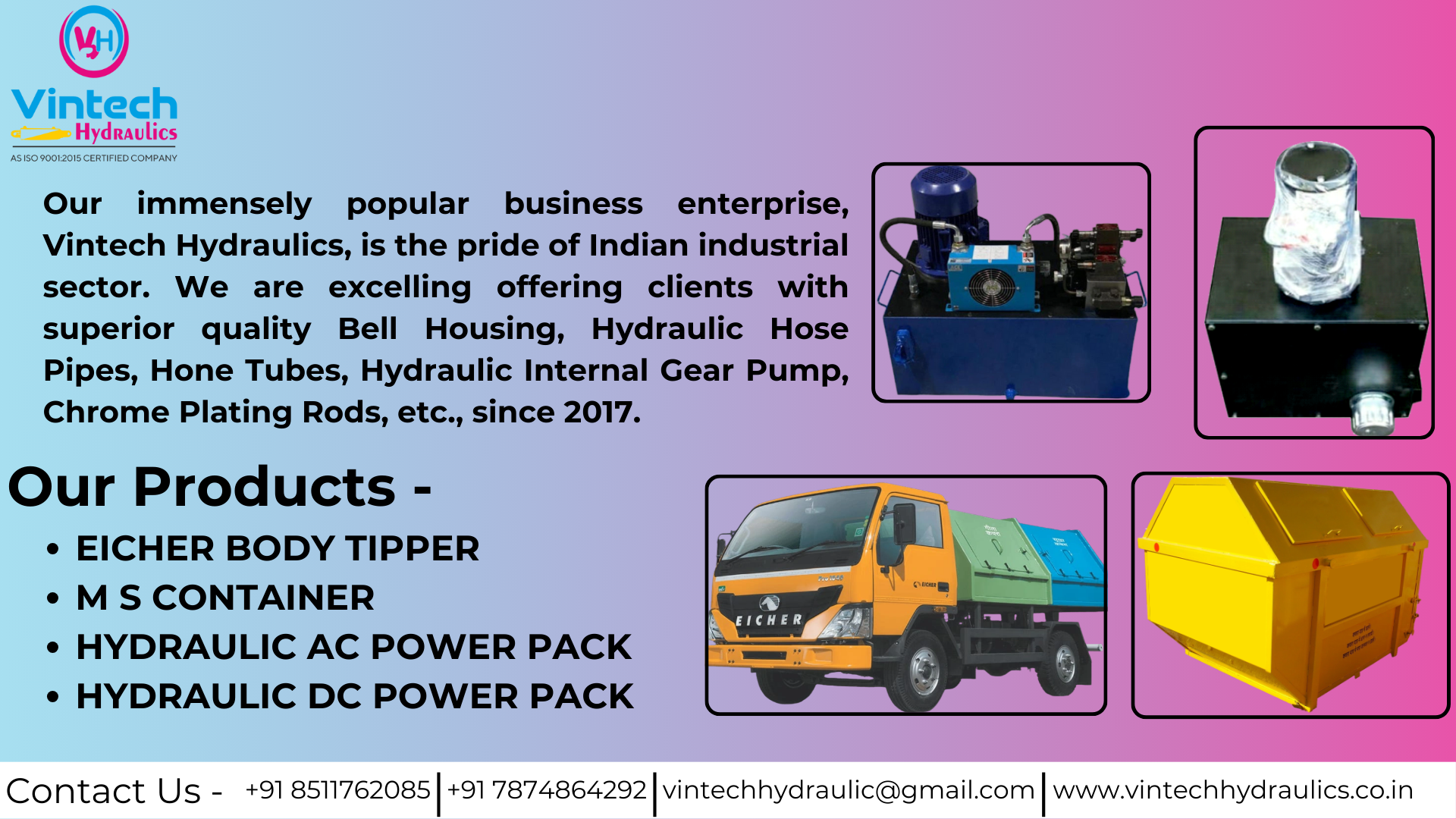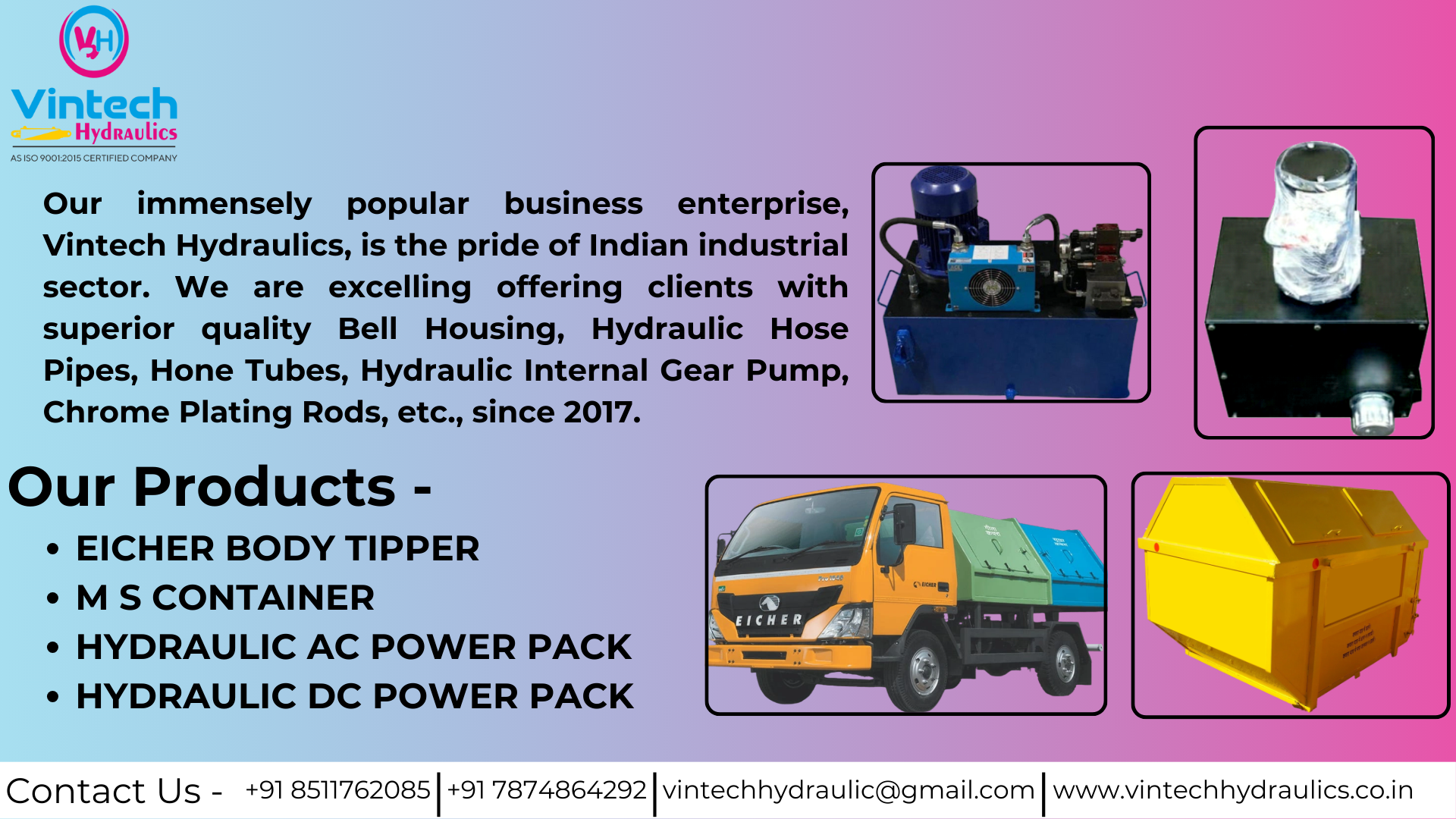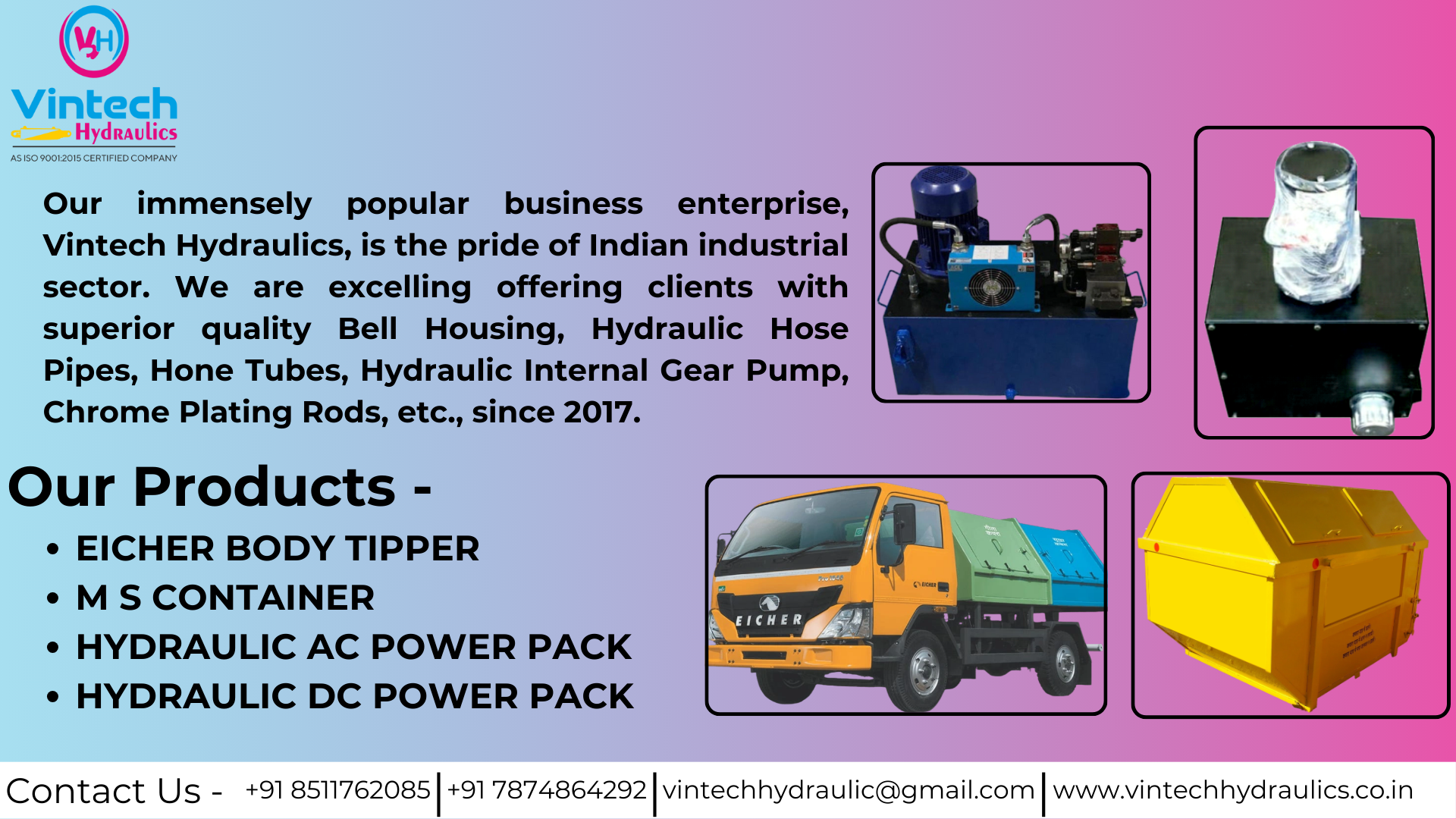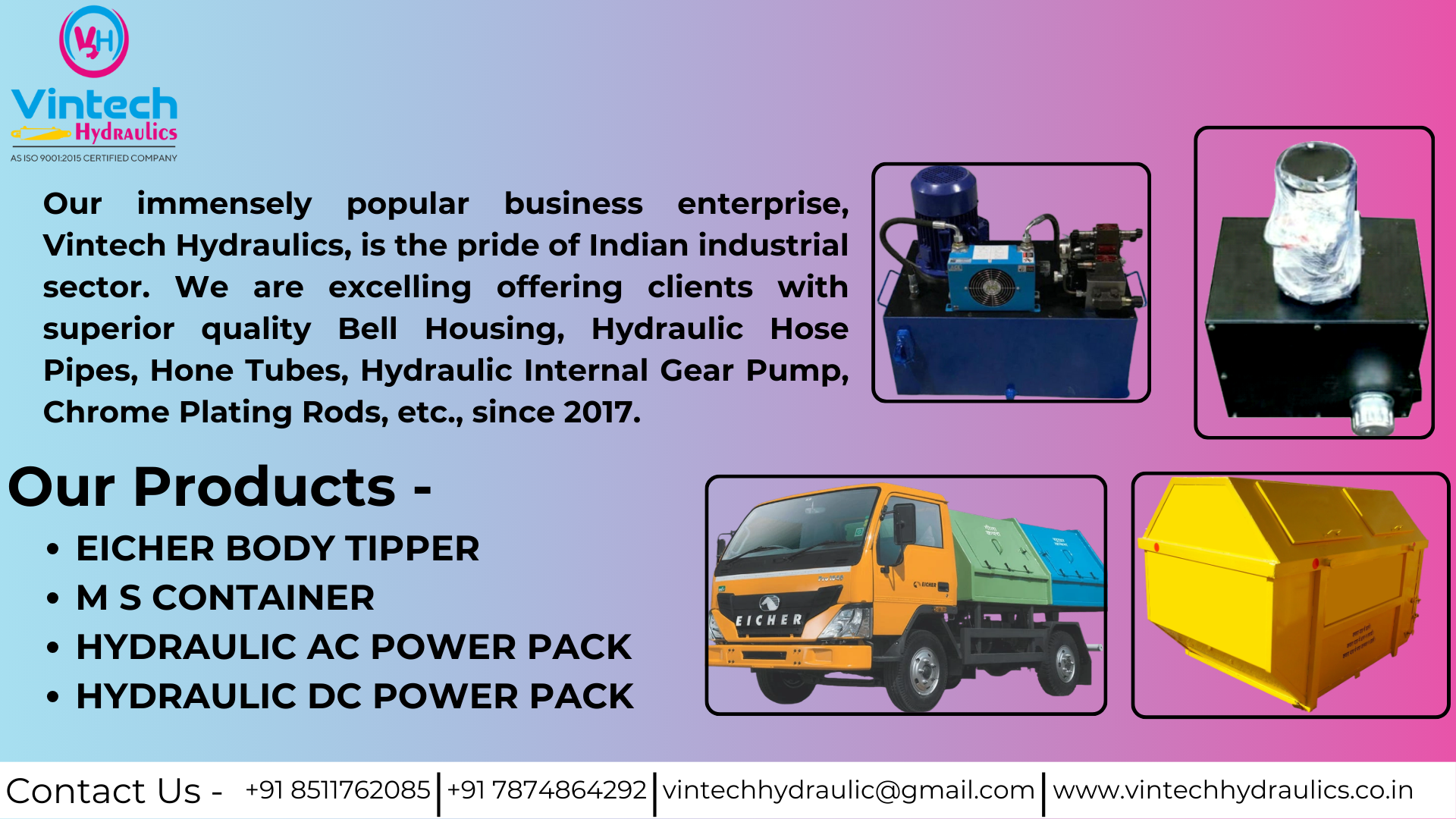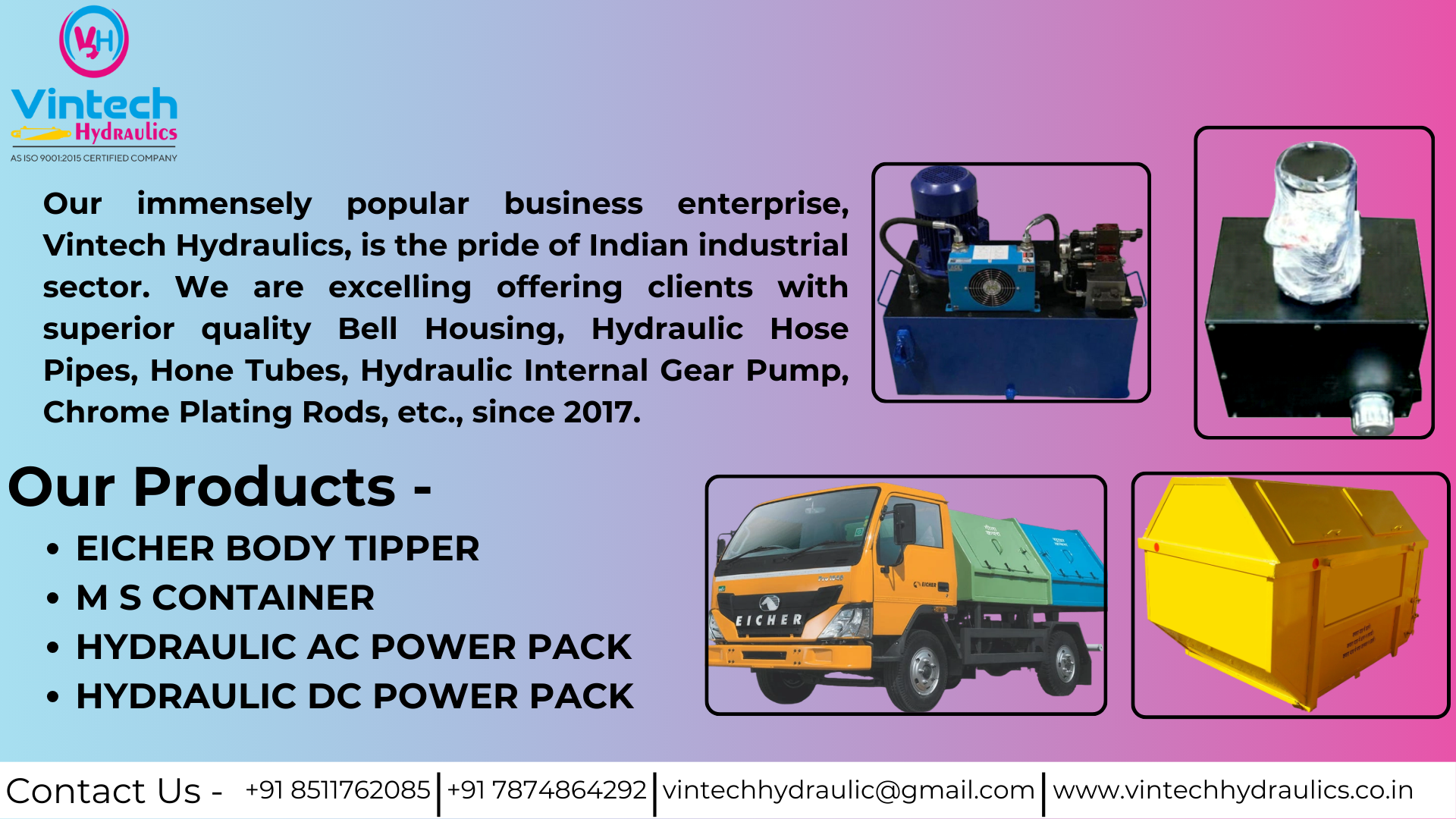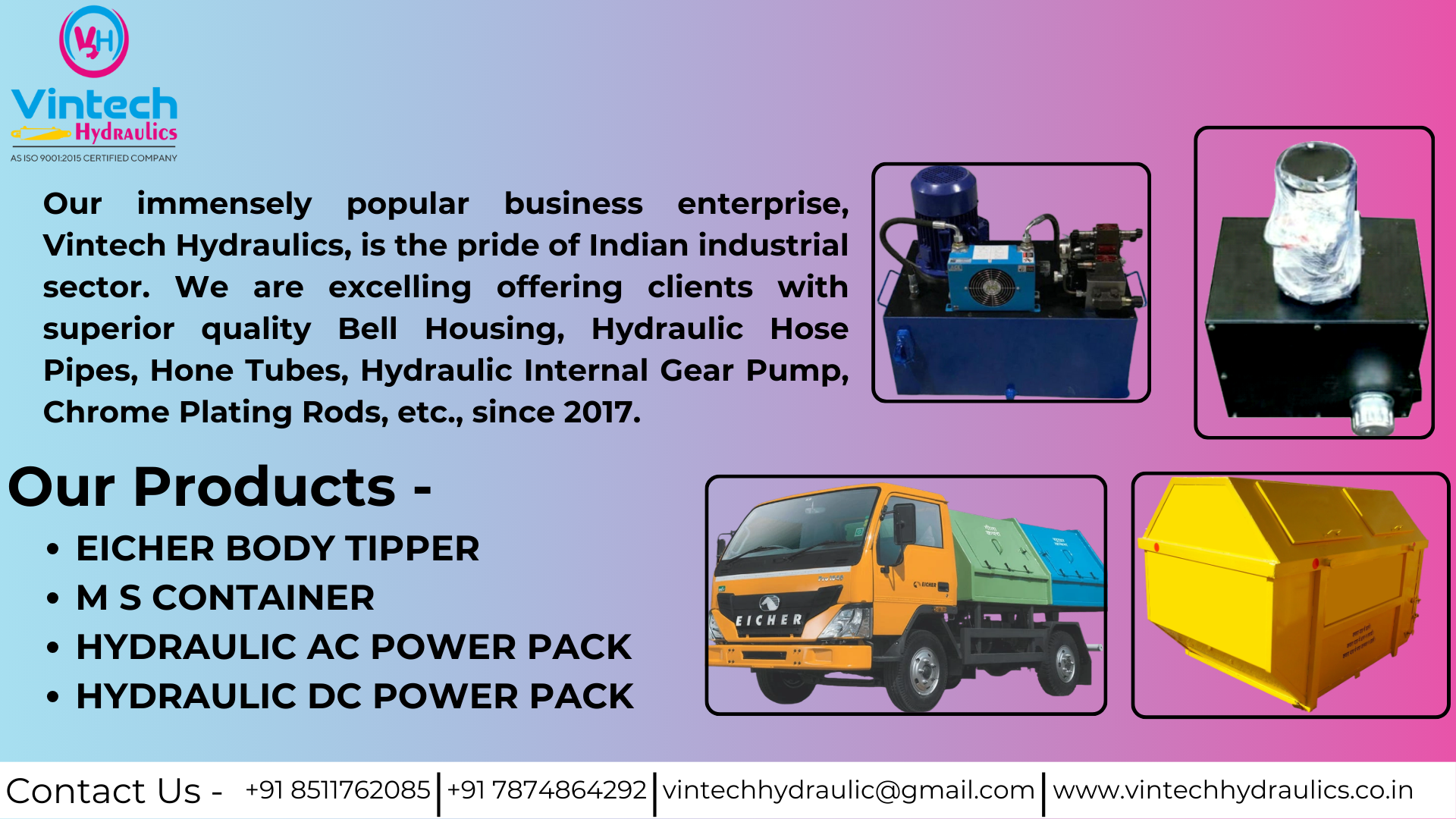
Hydraulic Vane Pump
Hydraulic Vane Pump
What is a Hydraulic Vane Pump?
A hydraulic vane pump is a type of positive displacement pump used to move hydraulic fluid within a hydraulic system. It uses rotating vanes mounted inside a slotted rotor to create pressure and flow, ideal for medium-pressure, quiet, and efficient hydraulic systems.
How It's Made – Construction and Working
Major Components:
| Component | Description |
|---|---|
| Rotor | Central rotating part with slots for vanes |
| Vanes | Flat plates sliding in and out of the rotor slots, creating chambers |
| Cam Ring | Eccentric ring housing the rotor and creating varying chamber volumes |
| Side Plates | Seal the pump body from both sides |
| Pump Body | Holds all internal components and contains suction/discharge ports |
| Shaft & Bearings | Allow power input and stable rotation |
Working Principle:
-
The rotor is eccentrically mounted in the cam ring.
-
As the rotor spins, centrifugal force pushes the vanes outward.
-
On the suction side: chamber volume increases = fluid drawn in.
-
On the pressure side: volume decreases = fluid expelled under pressure.
Manufacturing Process:
-
Design and CAD Modeling
-
Based on required pressure, flow, speed, and fluid type.
-
-
Material Selection
-
Machining
-
CNC precision cutting for cam ring, rotor slots, and vanes.
-
-
Assembly
-
All parts are aligned and inserted inside the pump body.
-
-
Testing & Calibration
-
Flow rate, pressure, and leakage checks performed.
-
Advantages of Hydraulic Vane Pump
| Feature | Benefit |
|---|---|
| Low Noise | Smoother operation than gear or piston pumps |
| Compact Design | Space-saving for vehicle and mobile applications |
| Good Flow Control | |
| Self-Priming | Can operate effectively without external priming |
| Easy to Service | Modular design allows easy maintenance or vane replacement |
| Long Life | Wear-resistant materials and lubrication mean extended operational life |
Importance of Vane Pumps
-
Vital in Mobile Hydraulic Systems (like utility vans, garbage trucks, ambulances)
-
Maintains consistent hydraulic pressure for actuators, lifts, or steering
-
Offers a balance of efficiency and durability in harsh environments
Qualities
| Quality | Description |
|---|---|
| Durability | High-pressure tolerance and wear resistance |
| Efficiency | |
| Low Vibration | Preferred in applications where noise/vibration are issues |
| Versatility | Suitable for open-loop and closed-loop hydraulic systems |
| Compact Design | Ideal for vehicles and mobile systems |
Where It’s Used
| Sector | Application |
|---|---|
| Utility Vehicles | Tippers, garbage trucks, mobile cranes |
| Commercial Vans | Lift-gates, hydraulic doors, tow systems |
| Construction | Concrete mixers, aerial lifts |
| Manufacturing | |
| Agriculture | Sprayers, loaders, and irrigation equipment |
| Marine | Deck lifts, steering, winches |
Frequently Asked Questions (FAQs)
Q1: What type of hydraulic fluid is used in vane pumps?
A: Typically ISO VG 32 to 68 hydraulic oils, depending on system pressure and temperature.
Q2: Are vane pumps suitable for high-pressure applications?
A: They are ideal for low to medium pressure (up to 210 bar). For high-pressure applications, piston pumps are more appropriate.
Q3: Can vane pumps run dry?
A: No, they must be lubricated by hydraulic fluid to avoid vane and housing wear.
Q4: How long do the vanes last?
A: With proper filtration and maintenance, vanes can last several thousand hours but may require periodic replacement.
Q5: What are signs of vane pump failure?
A: Noise increase, reduced pressure, fluid leakage, and overheating.
Significance
-
Key to Mobile Hydraulics: Offers flexibility in compact systems.
-
Balance of Performance & Cost: Mid-range pricing with excellent operational performance.
-
Used in Hybrid Vehicles: For power steering or braking assistance systems.
-
Adaptable to Renewable Energy: Can be powered by DC for solar systems or battery packs.
Conclusion
The Hydraulic Vane Pump is a versatile, efficient, and low-noise solution for a wide range of hydraulic applications, particularly in mobile and vehicle-based systems. Its smooth operation, self-priming ability, and compact design make it a top choice for manufacturers of hydraulic vans, utility trucks, and other commercial vehicles.
With regular maintenance and proper oil filtration, it offers long service life, low downtime, and excellent operational control.
